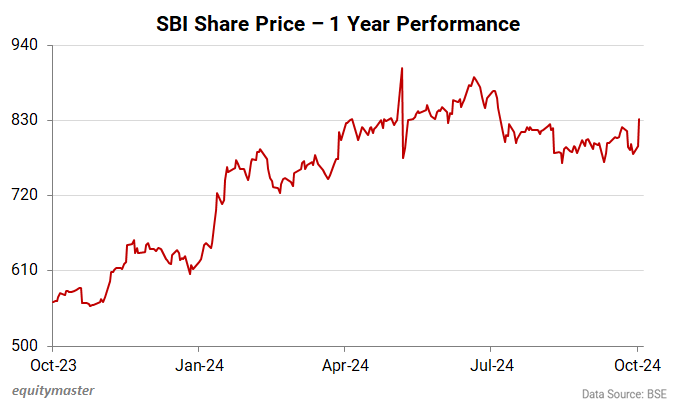Current Trends in SBI Share Price

Introduction
The State Bank of India (SBI), the largest public sector bank in India, plays a significant role in the financial sector, and its share price is a critical indicator for investors and analysts alike. Understanding the fluctuations in SBI’s share price is essential for evaluating market performance and making informed investment decisions. Recently, significant developments have influenced SBI’s stock performance, making it a focal point for investors.
Recent Trends and Developments
As of October 2023, SBI’s share price has been experiencing notable fluctuations due to various factors. On October 3, the share opened at approximately ₹600 and fluctuated within a range influenced by both market trends and bank-specific news. Analysts noted that the share price witnessed a slight decline following the announcement of a hike in lending rates. Yet, it has recovered over the past weeks due to strong quarterly earnings reported by the bank, showcasing its resilience amidst economic fluctuations.
The bank’s latest quarterly results, released earlier this month, highlighted a robust growth in net profit of around 68% compared to the previous year. This surge is attributed to reduced bad loans and improved asset quality, reflecting effective management and strategic focus on retail lending. Such promising indicators have drawn investor interest, leading to a rise in the share price by approximately 10% following the earnings report.
Market Outlook and Future Predictions
Looking ahead, analysts predict a positive trend for SBI shares, especially with the growing digital initiatives the bank is implementing. Initiatives to expand its digital banking footprint are expected to enhance customer engagement and drive profitability in the long run. Furthermore, the anticipation of a potential interest rate hike by the Reserve Bank of India (RBI) may also favorably impact SBI’s lending capabilities, which could further boost the share price in the coming months.
However, investors are cautioned about the potential volatility in the market due to global financial conditions and domestic economic policies that may affect liquidity and investor confidence. Monitoring quarterly results and market conditions will be essential for making informed investment decisions.
Conclusion
The SBI share price remains a critical aspect of the Indian banking sector’s outlook, and current trends indicate a blend of opportunities and challenges. While recent performance showcases resilience and potential for growth, market watchers should remain vigilant about external factors influencing stock performance. By keeping abreast of both global and domestic economic conditions, investors can better position themselves to benefit from changes in SBI’s share value.









